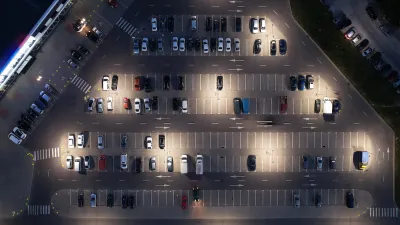Bipartisan support, robust funding, and access to comprehensive data are keys to the success of programs that assist unhoused veterans.

In an op-ed in Next City, Beth Sandor explains how cities have managed to reduce veteran homelessness despite a rise in the overall unhoused population — and what lessons these strategies offer for solving the broader crisis.
According to Sandor, 12 U.S. communities have achieved “functional zero” veteran homelessness. “The hallmarks of these successes in reducing veteran homelessness — including data, funding, and the power of coordination — provide a roadmap for U.S. communities to make homelessness rare and brief for everyone.”
Sandor writes that accurate data about unhoused residents is the first step in understanding people’s needs. “The Department of Veterans Affairs (VA) provides a good starting point by knowing each unhoused veteran that accesses its services — including names, demographic data, locations, health conditions, types of services received and needs beyond housing, such as psychiatric care or legal help.” Similar systems for all unhoused people could help allocate resources more effectively.
In addition to more robust funding, programs aimed at reducing veteran homelessness also benefit from deeper collaboration across levels of government and political parties. “That same cross-party buy-in is necessary for reducing homelessness across all populations.”
Sandor concludes, “The path forward is an understanding of each person experiencing homelessness — and the financial resources and collaboration that can bring each person home.”
FULL STORY: We’ve Cracked the Code on Veteran Homelessness. We Can Solve Homelessness the Same Way.

Alabama: Trump Terminates Settlements for Black Communities Harmed By Raw Sewage
Trump deemed the landmark civil rights agreement “illegal DEI and environmental justice policy.”

Planetizen Federal Action Tracker
A weekly monitor of how Trump’s orders and actions are impacting planners and planning in America.

The 120 Year Old Tiny Home Villages That Sheltered San Francisco’s Earthquake Refugees
More than a century ago, San Francisco mobilized to house thousands of residents displaced by the 1906 earthquake. Could their strategy offer a model for the present?

LA’s Tree Emergency Goes Beyond Vandalism
After a vandal destroyed dozens of downtown LA trees, Mayor Karen Bass vowed to replace them. Days later, she slashed the city’s tree budget.

Sacramento Leads Nation With Bus-Mounted Bike Lane Enforcement Cameras
The city is the first to use its bus-mounted traffic enforcement system to cite drivers who park or drive in bike lanes.

Seattle Voters Approve Social Housing Referendum
Voters approved a corporate tax to fund the city’s housing authority despite an opposition campaign funded by Amazon and Microsoft.
Urban Design for Planners 1: Software Tools
This six-course series explores essential urban design concepts using open source software and equips planners with the tools they need to participate fully in the urban design process.
Planning for Universal Design
Learn the tools for implementing Universal Design in planning regulations.
Ada County Highway District
Clanton & Associates, Inc.
Jessamine County Fiscal Court
Institute for Housing and Urban Development Studies (IHS)
City of Grandview
Harvard GSD Executive Education
Toledo-Lucas County Plan Commissions
Salt Lake City
NYU Wagner Graduate School of Public Service





























